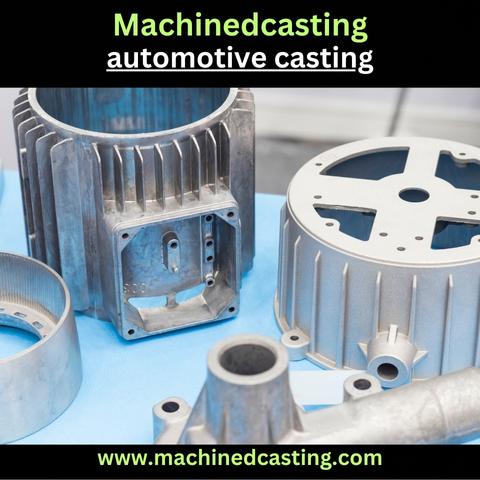Automotive casting is a cornerstone of modern vehicle manufacturing, providing the means to produce complex and durable components essential for a vehicle's performance and safety. This process involves the pouring of molten metal into molds to create parts ranging from engine blocks to transmission housings. Understanding the nuances of automotive casting is crucial for anyone involved in the automotive industry, as it impacts cost, quality, and production efficiency.
The Casting Process
1. Mold Preparation
The first step in the casting process is mold preparation. Molds can be made from sand, metal, or other refractory materials, each with distinct advantages. Sand molds, for example, are economical and versatile but generally used for lower volume production. In contrast, metal molds, often made of steel or iron, offer better dimensional accuracy and surface finish, making them suitable for high-volume production.
2. Melting and Pouring
The next phase involves melting the chosen metal, typically aluminum, iron, or magnesium alloys, to a precise temperature to ensure optimal flow and fill characteristics. Once melted, the metal is poured into the prepared mold, either by gravity or under pressure. This step requires careful control to avoid defects such as porosity or incomplete filling, which can compromise the integrity of the final component.
3. Cooling and Solidification
After pouring, the molten metal must cool and solidify within the mold. The cooling rate is crucial as it affects the microstructure and mechanical properties of the cast part. Controlled cooling methods, such as using chills (metal inserts that absorb heat), can enhance the quality and performance of the casting.
4. Mold Removal and Finishing
Once the metal has solidified, the mold is removed through various methods such as shaking, breaking, or dissolving, depending on the mold material. The casting is then cleaned to remove any remaining mold material and subjected to finishing processes like grinding, machining, or heat treatment to achieve the desired dimensions, surface finish, and material properties.
Types of Automotive Casting
1. Sand Casting
Sand casting is widely used for producing large and complex automotive parts. It involves creating a mold from a sand mixture, which is then filled with molten metal. Despite its flexibility and cost-effectiveness, sand casting generally requires more finishing work due to rougher surface finishes.
2. Die Casting
Die casting is prevalent in high-volume production of smaller parts, such as engine components and transmission cases. It uses reusable metal molds and high-pressure techniques to inject molten metal, resulting in parts with excellent dimensional accuracy and smooth surfaces. The high initial cost of die casting molds is offset by their long lifespan and the low per-part cost in large production runs.
3. Investment Casting
Also known as lost-wax casting, this method produces parts with intricate geometries and fine details. It involves creating a wax model, coating it with a ceramic shell, and then melting away the wax to form a mold. Investment casting is ideal for precision components like turbine blades and gearboxes but is typically more expensive and time-consuming than other methods.
Materials Used in Automotive Casting
1. Aluminum Alloys
Aluminum alloys are favored for their light weight, high strength, and corrosion resistance. They are commonly used in engine blocks, cylinder heads, and other critical components, contributing to improved fuel efficiency and performance.
2. Iron Alloys
Iron, particularly cast iron, is valued for its excellent wear resistance, machinability, and cost-effectiveness. It is often used in heavy-duty components such as brake drums, engine blocks, and differential housings.
3. Magnesium Alloys
Magnesium alloys are among the lightest structural metals, offering a significant reduction in vehicle weight, which enhances fuel efficiency and reduces emissions. Their application includes steering wheels, seat frames, and various other structural parts.
Innovations and Future Trends
Advancements in automotive casting are driven by the demand for lightweight, high-performance, and environmentally friendly vehicles. Innovations include the development of new alloy compositions, 3D printed molds for rapid prototyping, and automation in casting processes to enhance precision and efficiency. Additionally, the integration of real-time monitoring systems and AI-driven analytics is revolutionizing quality control and process optimization.
Conclusion
Automotive casting is an intricate and essential aspect of vehicle manufacturing, blending traditional techniques with modern innovations to meet the evolving demands of the automotive industry. By mastering the various casting processes and materials, manufacturers can produce high-quality, durable components that enhance vehicle performance, safety, and efficiency. As technology continues to advance, the future of automotive casting promises even greater achievements in precision, sustainability, and overall manufacturing excellence.


No comments yet